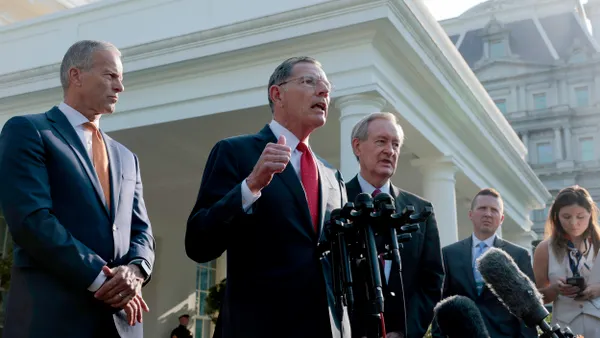Editor's Note: The following is a guest post from Eric Dunford, director of sustainability at CarbonCure.
The COVID-19 pandemic has challenged the economic and civic function of our communities. Administrators in cities of every size have been forced to shift all effort and resources toward meeting the public health crisis — and managing the turbulent changes in day-to-day life.
While managing the pandemic is rightly the top priority for all governments today, our global climate challenge still looms as risks invited by inaction continue to pose great threat to our communities. As Bill Gates noted recently, “Even as the world works to stop the novel coronavirus and begin recovering from it, we also need to act now to avoid a climate disaster by building and deploying innovations that will let us eliminate our greenhouse gas emissions.”
Before the pandemic hit, governments at all levels were working hard to reduce their carbon emissions through necessary energy efficiency, renewable energy and cleaner transportation investments. But in the face of tightening (or in some cases, evaporating) budgets, how can local governments hope to maintain — much less increase — momentum on this front?
There is an under-utilized and low-cost policy option available that local governments can readily pursue today: cutting emissions arising from concrete materials used in public infrastructure projects.
Concrete is the most widely used construction material in the world due to its unparalleled functionality, immense strength, insulating properties and ability to adapt to virtually any form. As a result, it is also responsible for about 7% of annual global carbon emissions. Government infrastructure consumes at least a quarter of the ready mix concrete purchased worldwide, and represents the fastest growing demand source that’s estimated to grow at a revenue-based CAGR of 8.4% through the year 2027.
In an average city, concrete makes up 80% of the built environment, making it a rich target for decarbonization solutions. Reduced-carbon concrete can now be manufactured commercially, and establishing policies that favor such low-carbon material for public sector projects will help cities reduce their emissions.
Better yet, this approach to emissions management is cost-competitive and encourages innovation in carbon capture and utilization technologies.There are two basic approaches to the growing movement of policies favoring low-carbon concrete:
- Placing a maximum ‘cap’ on emissions arising from cement and/or concrete used for public projects; and
- Employing a preferential procurement model for public sector concrete purchasing.
California's Marin County provides an example of the first approach. In late 2019, it established the nation’s first local building code that limits emissions from concrete used in public projects. The county developed "practical requirements for the composition of concrete that maintains adequate strength and durability for the intended application and at the same time reduces greenhouse gas emissions." Concrete sold to Marin County must not exceed defined limits for carbon content, effectively capping the carbon footprint of concrete products that the county buys.
The New York State Assembly provides an example of the second approach. In 2019, Assemblymember Robert Caroll introduced a bill which would direct state departments to establish procurement selection criteria favoring concrete with reduced emissions. The bill proposes to give the vendor with the lowest carbon products a 5% artificial price cut during the bid selection process, and offers an additional incentive for producers who actually use CO2 to make concrete.
The key to both of these approaches is how they incentivize rather than penalize local concrete producers to help cities meet their sustainability goals. Effective low-carbon concrete policies should also encourage suppliers to be active partners in meeting the challenge of building more resilient communities by removing barriers to adopting sustainable innovations.
Local governments aiming to pursue low-emissions concrete policy solutions can start by:
- Eliminating any outdated standards that may hinder the use of new materials and technologies; and
- Using standardized tools that enable accurate measurement and reporting of the life-cycle carbon impact of concrete materials.
In this time of crisis, we have a rare opportunity to question the status quo and to change and adapt — putting much of the "normal" aversion to new solutions temporarily on pause. Even with something as familiar and commonplace as concrete, small changes to the status quo can add up to a big difference.
As we work at "getting back to normal," let’s think about how we can reshape our cities into better versions of themselves for our own benefit — and the benefit of future generations. Join cities like Honolulu, Austin, TX and Portland, OR in enacting policies that drive down emissions from cement and concrete.









